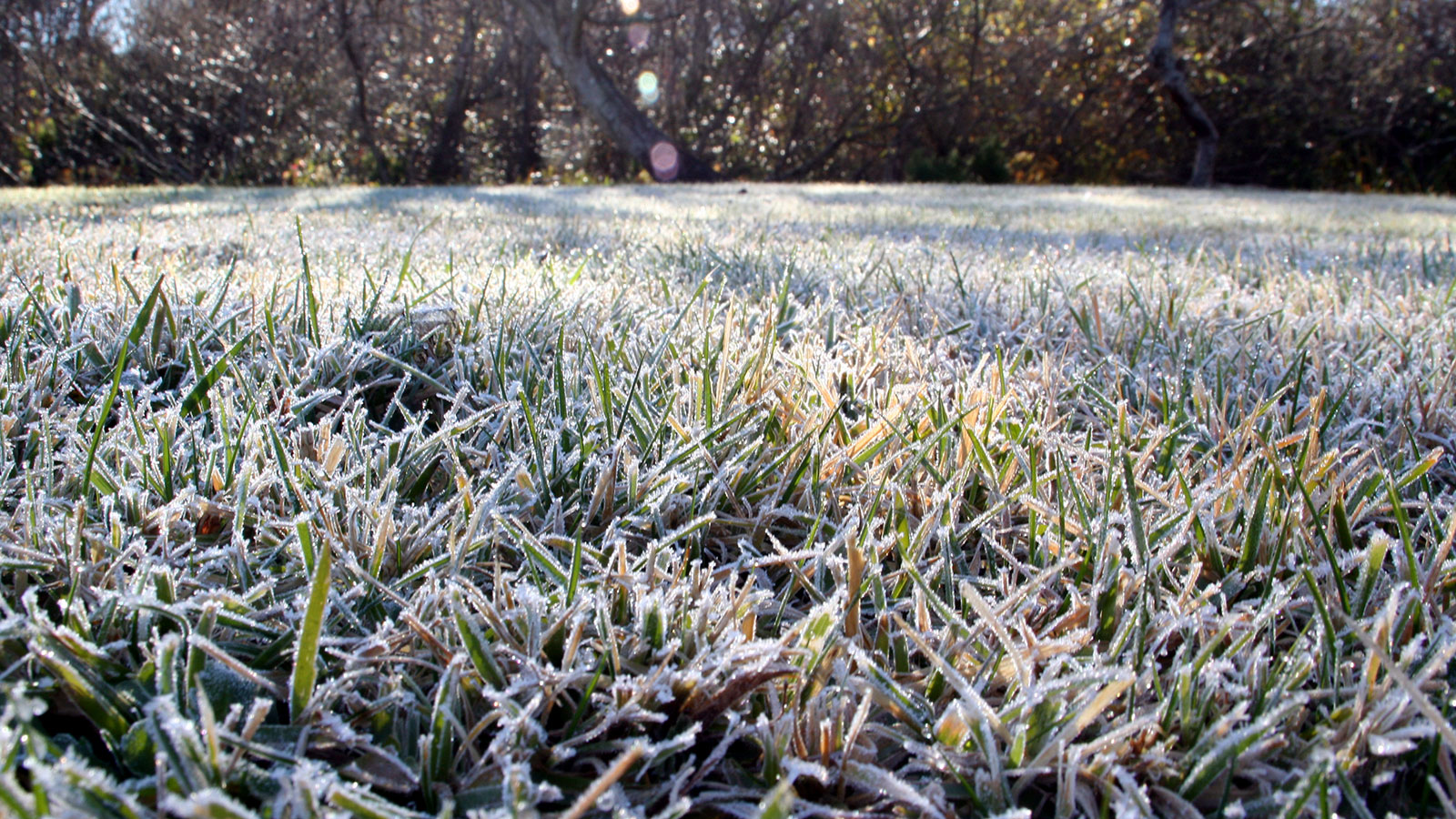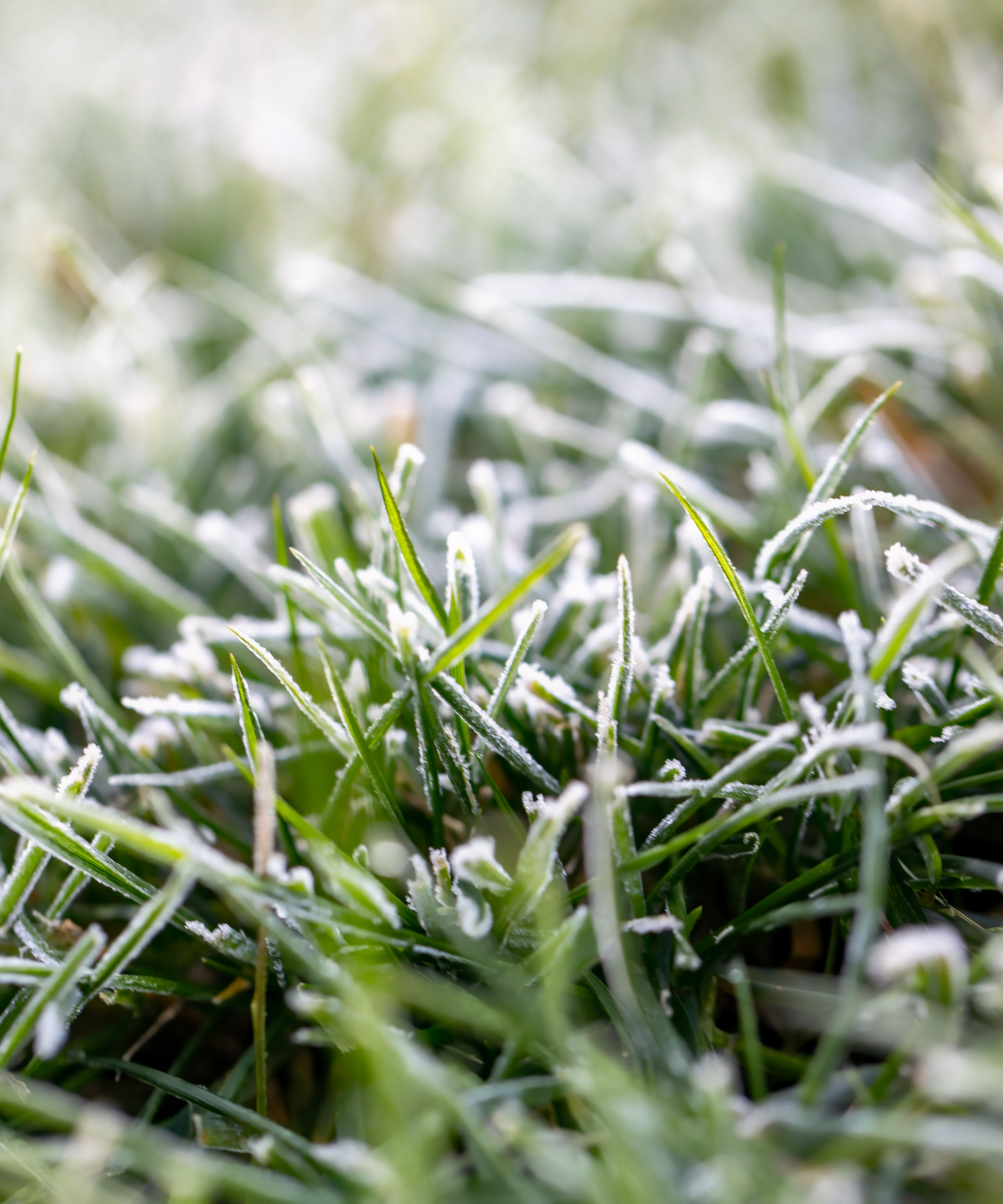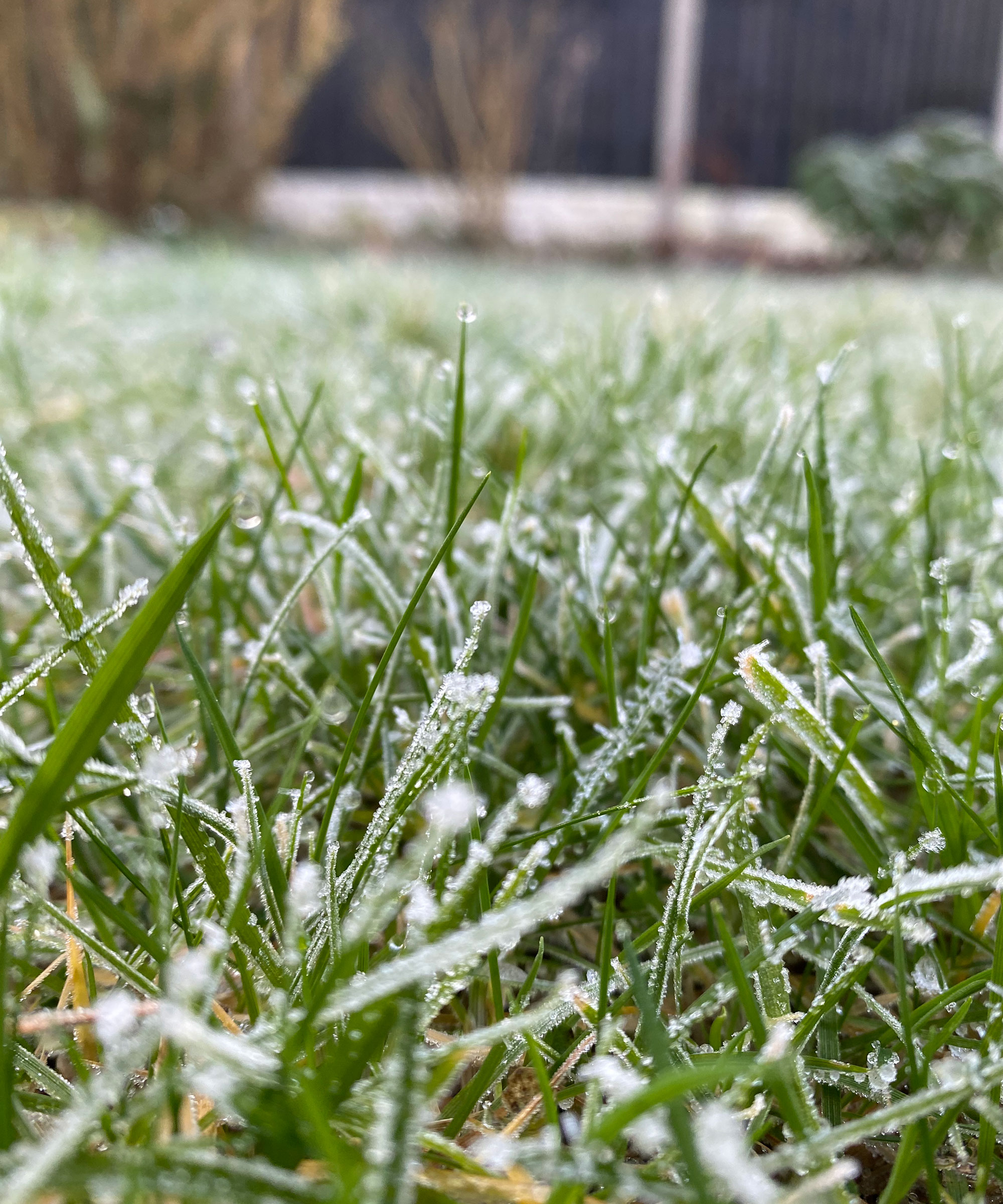Will grass seed grow after a frost? Experts offer their cold weather lawn growing tips
Avoid disappointment and costly mistakes by learning whether grass seed will grow after a frost, plus what you should do to protect it


As with most seed sowing, frost can have a detrimental effect on any young plant, particularly if it occurs just after germination.
So whether you are establishing a lawn from scratch or simply filling in bare patches with fresh seed, it’s definitely a task that you want to succeed. Costing time, energy and money it’s good to know the basics before you begin. Identifying the right season and weather conditions is essential, especially if you don't want frost to ruin all your efforts.
Even if you are itching to start planting grass seed to green up your lawn, take your time to find out whether grass seed will grow after a frost and save yourself potential cash and heartache. Our expert tips from industry experts will help you time your grass seed sowing to perfection.

Frost may kill young seedlings if they haven't had chance to establish strong roots
Will grass seed grow after a frost?
‘Frost doesn’t kill grass seed, thankfully. Imagine Mother Nature losing all grass varieties due to frost killing seeds,’ explains Russell Taylor, vice president of Live Earth Products. ‘But planting before a frost can cause plant loss. If the seedling has not established enough roots and food reserves, it will not survive.’
Shawn Denny, owner of earthworks specialist Specialty Grading Inc explains further about why you need to think carefully about when to plant grass seed.
‘Grass seed can grow after a frost, but the conditions for germination and establishment may be less favorable,’ he says. ‘Frost can damage or kill newly sprouted grass seedlings, and the ground may be too hard for seed to make good contact with the soil. Additionally, frost can also inhibit or slow down the germination process.’
Is it possible to sow grass seed after a frost?
‘It is recommended to wait until the ground has thawed and the soil temperature has risen above freezing before planting grass seed after a frost,’ says Shawn Denny. ‘Also, it's essential to ensure that the soil is not too wet or waterlogged, as this can also inhibit seed germination.’
Different types of turf grass seed have different germination periods, and it’s worth bearing this in mind when it comes to timing your seed sowing, especially if you want to make sure they won't be damaged by any potential frosts.
‘Most grass seeds start growing within 14 days. However, some grass seed types can take longer or shorter to grow,’ says Aaron Green, landscaping expert at Essential Home & Garden. For example, Kentucky Bluegrass (available from Walmart) can take up to a month to show any signs of growth while, if conditions are right, perennial ryegrass is a fast-growing grass seed and can green up in as little as four days.

Once new grass is established, it shouldn't be damaged by winter frosts
How can I protect grass seed from frost?
To give your lawn seed the best chance of surviving a frost, Sarah from The Lawn Chick, advises it's best to plant it at least 45 days before you expect the first winter frost to hit. This is to ensure the roots have plenty of time to get well established, and therefore be strong enough to withstand the worst of the winter weather.
And while there’s not much you can do if a frost arrives and your sown grass seed has already germinated, there are a few steps to follow which may lessen the damage and protect plants from frost.
- Avoid stepping on frozen grass seed or young shoots as this will harm the emerging blades and is likely to cause irreparable damage.
- Water the ground before a freeze – yes it may sound crazy, but there is some evidence that the evaporation process will result in enough heat to prevent the grass from freezing.
- Good preparation before sowing grass seed will encourage strong, healthy roots to form, which will help the plant combat frosty conditions.
- If you've sown your grass seed and it has already sprouted, try covering it at night with lightweight frost protection fabric, available from Amazon. Make sure you remove it during the day so your grass seed can still get the sunlight it needs to grow well.
What is dormant seeding and how does it work?
UK-based seed company Boston Seeds explains that whilst it is not ideal to sow during a frost, it is possible with some seed types if you are prepared to be patient. Their specialist BS Winter Green Grass mix includes Tetraploid Perennial Ryegrass and will germinate at soil temperatures down to 41˚F.
‘Dormant seeding is when seed is sown during extremely cold weather, and it stays in a dormant state until the conditions are right for germination,’ says managing director George Wallis. ‘You might choose to do this if you prefer not to wait for the ground to thaw sufficiently for planting in spring. Doing it this way will mean the job is already done and you’ll be ahead of the game when the warmer weather returns.’
Sign up to the Homes & Gardens newsletter
Design expertise in your inbox – from inspiring decorating ideas and beautiful celebrity homes to practical gardening advice and shopping round-ups.

Journalist Jill Morgan has spent over 20 years writing and editing gardening, interior and property features. Titles she has worked on include The English Home, House Beautiful, Ideal Home, Houzz and Modern Gardens and she writes regularly for H&G as a Contributing Editor. Whilst she is a dab hand at renovation projects and DIY, she is happiest when out digging in the garden or planning a new border.
-
 The moody kitchen in this Victorian home has the most unique wall design I've ever seen – it's the perfect way to bring an elegant, aged feel to the space
The moody kitchen in this Victorian home has the most unique wall design I've ever seen – it's the perfect way to bring an elegant, aged feel to the spaceThe hand-painted feature has brought a sense of history and patina back into the remodeled kitchen
By Molly Malsom Published
-
 I gave the ‘try-for-five’ method a go in my small home – it's a brilliantly easy way to beat chore procrastination in seconds
I gave the ‘try-for-five’ method a go in my small home – it's a brilliantly easy way to beat chore procrastination in secondsThis method is great for those with executive dysfunction
By Chiana Dickson Published